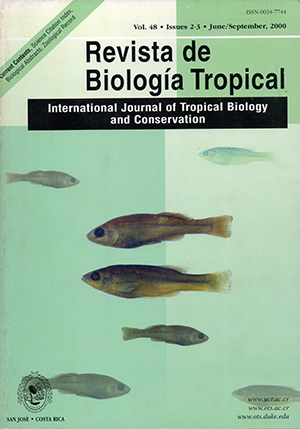Resumen
Entre agosto de 1995 y agosto de 1997. se llevaron a cabo 26 campañas de pesca en el Pacífico de Nicaragua. Utilizando el palangre como arte de pesca y un batitermógrafo, fue posible relacionar algunas variables físicas con la distribución espacial y vertical de las diferentes especies de tiburón capturadas: thresher (Alopias vulpinus), azul (Prionace glauca), gris (Carcharhinusfalciformis) y martillo (Sphyma lewini). La distribución espacial de todas las especies mostró una significativa aglomeración en el extremo sureste del Pacifico nicaragüense, justo en el área de influencia del afloramiento estacional del Golfo de Papagayo. El ámbito máximo de temperaturas superficiales en las que se efectuaron las capturas se ubicó entre los 25°C y los 28°C. Se logró determinar una clara dependencia entre este parámetro físico y la presencia del recurso. La distribución vertical de las capturas evidenció que estas especies se localizan principalmente en los niveles termoclinos, sobre la isoterma de 15°C. En cuanto a la dependencia de las capturas con la profundidad local, el tiburón azul se capturó en áreas fundamentalmente oceánicas, sobre la isóbata de 1800 m, mientras que el tiburón gris y thresher a pesar de ser también oceánicos, mostraron una tendencia a acercarse a la plataforma continental. Finalmente, en cuanto a las tallas, los registros mostraron que los especímenes con mayor talla pertenecieron al tiburón thresher, con longitudes entre los 200 y los 300 cm. Le siguió en orden descendente el tiburón gris y el tiburón azul.##plugins.facebook.comentarios##

Esta obra está bajo una licencia internacional Creative Commons Atribución 4.0.
Derechos de autor 2000 Revista de Biología Tropical
Descargas
Los datos de descargas todavía no están disponibles.






